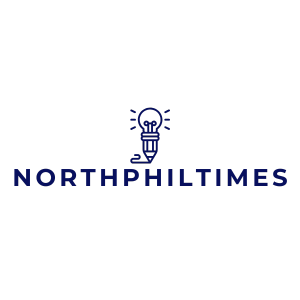Imagine waking up whenever you want, sipping coffee in your pajamas, and working from the comfort of your couch. For many, this isn’t just a dream—it’s the reality of being a full-time freelancer. With the freedom to choose projects and clients, freelancers often find themselves living the life they’ve always wanted. But it’s not all sunshine and rainbows; it comes with its own set of challenges that can make even the most seasoned professional question their life choices.
The gig economy is booming, and more people are trading in their 9-to-5 jobs for a life of flexibility and creativity. Whether it’s graphic design, writing, or consulting, freelancers are carving out their niches and thriving. So, is the freelance life calling? Buckle up as we explore the highs, lows, and everything in between of becoming a full-time freelancer.
Table of Contents
ToggleWhat Is a Full Time Freelancer?
A full-time freelancer operates as an independent contractor, providing services or products to clients without long-term employment. This role includes various fields such as writing, graphic design, programming, and consulting. Flexibility defines the lifestyle, allowing freelancers to manage their own schedules and choose specific projects that align with their skills and interests.
Work typically occurs from any location, be it home, co-working spaces, or a coffee shop. The absence of a traditional office creates a relaxed working environment, supporting creativity and productivity. Many individuals embrace this lifestyle, attracted by the benefits and opportunities it presents. They enjoy the freedom to accept or decline projects based on personal preferences.
While attractive, freelancing presents challenges. Income can vary significantly month to month, making financial stability a concern. Freelancers must also manage administrative tasks, including invoicing and client communication, which can consume valuable time.
Support from a strong network helps navigate this landscape. Connecting with other freelancers or industry professionals fosters collaboration and knowledge-sharing. Various online platforms serve as marketplaces for freelance work, facilitating the connection between freelancers and prospective clients.
Establishing a personal brand is essential for success. It differentiates freelancers in a competitive market while showcasing their unique skills to attract clients. Cultivating a professional portfolio enhances visibility and builds credibility. Understanding the intricacies of freelancing allows individuals to thrive in this dynamic environment, balancing the rewards and challenges that come with being a full-time freelancer.
Advantages of Being a Full Time Freelancer
Freelancing offers numerous advantages that attract many to this profession. The flexibility and opportunity for diverse work often serve as magnet points.
Flexible Schedule
Freelancers enjoy the ability to set their own schedules. They can choose to work during their most productive hours, whether that’s early in the morning or late at night. Many appreciate the freedom to take breaks and shift work hours to accommodate personal commitments. In contrast to traditional jobs, where strict schedules prevail, freelancing promotes work-life balance. Clients evaluate a freelancer’s availability and performance, which allows them to customize work hours as needed. This flexibility often leads to increased motivation and job satisfaction.
Diverse Opportunities
A wide range of projects attracts freelancers to various fields. From writing and design to programming and marketing, freelancers can explore work that aligns with their passions and skills. They can collaborate with clients from different industries, enhancing their professional experiences. Exposure to unique challenges further facilitates skill development and expertise. Additionally, freelancers can select projects that interest them, fostering creativity and innovation in their work. This diversity not only keeps the job engaging but also contributes to building a versatile portfolio that showcases their capabilities.
Challenges Faced by Full Time Freelancers
Freelancers encounter several challenges while navigating their careers. These obstacles can significantly affect both their professional and personal lives.
Income Stability
Income fluctuations mark a primary concern for full-time freelancers. Many experience unpredictable monthly earnings, which complicates budgeting and financial planning. In 2020, about 27% of freelancers reported that irregular income hampered their financial security. Providing services over longer contract periods can enhance stability, yet many freelancers find it challenging to secure consistent, ongoing projects. Additionally, clients may delay payments, prolonging financial uncertainty. Establishing multiple income streams or having a financial cushion can mitigate these risks. Diversifying projects and adapting to market demands can also help create a more stable income flow.
Work-Life Balance
Achieving work-life balance poses a significant challenge for full-time freelancers. The flexibility of freelancing often blurs the boundaries between work and personal life. Many freelancers struggle to disconnect from projects, leading to longer hours and burnout. Research indicates that 43% of freelancers work more than 40 hours a week, a statistic that highlights the need for effective time management strategies. Setting strict schedules and designating specific workspaces can improve focus and productivity. Prioritizing downtime fosters mental well-being and enhances overall performance. Establishing clear boundaries between professional and personal time leads to a healthier lifestyle for freelancers.
Essential Skills for Success as a Full Time Freelancer
Success as a full-time freelancer hinges on mastering specific skills that can enhance productivity and foster client relationships. Learning to manage time effectively and communicate efficiently plays a vital role in this dynamic work model.
Time Management
Effective time management stands as a cornerstone skill for freelancers. Prioritizing tasks ensures important deadlines are met, while creating structured schedules enhances productivity. Many freelancers benefit from tools like calendars or task management apps, which help track projects and commitments. Allocating specific hours for work and breaks reduces burnout by maintaining a balanced routine. Ultimately, setting clear goals and deadlines aids in achieving better focus and avoiding distractions.
Networking and Communication
Networking and communication are crucial to building a strong client base. Establishing connections with industry peers often leads to referrals and collaborative opportunities. Actively participating in online communities, attending networking events, or engaging on social media platforms provides exposure and fosters relationships. Excellent communication skills enhance client relationships by fostering trust and clarity, ensuring both parties are aligned on project objectives. Regular updates and feedback loops keep clients informed and engaged, which contributes to long-term partnerships.
Tips for Transitioning to Full Time Freelancing
Transitioning to full-time freelancing involves strategic steps to build a successful career. Establishing a solid foundation in areas like client relations and workspace efficiency proves essential.
Building a Client Base
Developing a client base requires focused effort. Networking plays a significant role, with many freelancers finding clients through online platforms like Upwork and Fiverr. Utilizing social media platforms enhances visibility, attracting potential clients through engaging content. Maintaining an updated portfolio showcases expertise, allowing freelancers to display work samples that align with client needs. Also, relationships built through referrals often lead to reliable projects. According to research, 70% of freelancers find work through networking. Leveraging established connections strengthens credibility while expanding professional opportunities.
Setting Up Your Workspace
Creating an effective workspace remains crucial for productivity. A dedicated area helps to establish boundaries and separates work from personal life. Ergonomics matter, with comfortable furniture reducing strain and enhancing focus. Additionally, good lighting influences mood and concentration, making it essential to choose a well-lit space. Including essential tools, like high-speed internet and quality software, ensures technical efficiency. Personal touches, like plants or artwork, can promote creativity and inspire motivation. Ensuring a clutter-free environment fosters a clear mind, enabling freelancers to tackle tasks effectively.
Embracing the full-time freelance lifestyle offers a unique blend of freedom and creativity. While the allure of flexible hours and diverse projects is undeniable, it’s essential to remain aware of the challenges that accompany this path. Financial instability and the blurred lines between work and personal life can pose significant hurdles.
To succeed in this dynamic environment, freelancers must cultivate essential skills and build a supportive network. By mastering time management and maintaining clear communication with clients, they can navigate the ups and downs of freelancing more effectively. With the right strategies in place, individuals can enjoy the many rewards that come with being a full-time freelancer while mitigating potential pitfalls.





